
(a)
Interpretation:
The product of reaction of
Concept introduction:
The
Answer to Problem 18.47AP
The products formed on reaction of

Explanation of Solution
The reaction of

Figure 1
This reaction is known as electrophilic substitution reaction. The ortho, para directing power of hydroxyl group is greater than the methyl group, therefore, the sulfonic group is directed according to the position of hydroxyl group. Due to the presence of

Figure 2
The products formed on reaction of
(b)
Interpretation:
The product on reaction of
Concept introduction:
The chemical reaction in which an electrophile group is replaced by another functional group is known as electrophilic substitution reaction. When the electrophilic substitution happens on an aromatic ring such as benzene then the reaction is known as electrophilic aromatic substitution.
Answer to Problem 18.47AP
The products formed on reaction of

Explanation of Solution
The reaction of

Figure 3
Under dark conditions, there is electrophilic substitution reaction. In this reaction, bromine will get substituted at the benzene ring. The position of the bromine depends on the hydroxyl group as it has more ortho, para directing power than methyl group. Therefore, the products formed on reaction of

Figure 4
The products formed on reaction of
(c)
Interpretation:
The product on reaction of
Concept introduction:
The chemical reaction in which an electrophile group is replaced by another functional group is known as electrophilic substitution reaction. When the electrophilic substitution happens on an aromatic ring such as benzene then the reaction is known as electrophilic aromatic substitution.
Answer to Problem 18.47AP
The product on reaction of

Explanation of Solution
The reaction of

Figure 5
Under light conditions, there will be bromine radical formed and benzylic substitution will take place. Further, due to excess of bromine, bromine will get substituted at the benzene ring. The position of the bromine depends on the hydroxyl group as it has more ortho, para directing power than methyl group. Therefore, the products formed on reaction of

Figure 6
The product on reaction of
(d)
Interpretation:
The product on reaction of
Concept introduction:
The chemical reaction in which an electrophile group is replaced by another functional group is known as electrophilic substitution reaction. When the electrophilic substitution happens on an aromatic ring such as benzene then the reaction is known as electrophilic aromatic substitution.
Answer to Problem 18.47AP
No product is formed on reaction of
Explanation of Solution
The electron pair of oxygen of hydroxyl group is in conjugation with the phenyl ring. Due to this conjugation, it does not get protonated. Therefore, no reaction is taking place on adding dilute
There is no product formed on reaction of
(e)
Interpretation:
The product on reaction of
Concept introduction:
The chemical reaction in which an electrophile group is replaced by another functional group is known as electrophilic substitution reaction. When the electrophilic substitution happens on an aromatic ring such as benzene then the reaction is known as electrophilic aromatic substitution.
Answer to Problem 18.47AP
The product on reaction of
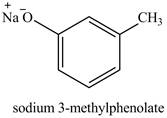
Explanation of Solution
The reaction of

Figure 7
On adding sodium hydroxide, the hydroxyl group gets deprotonated to form a phenolate ion. Therefore, the product formed on reaction of
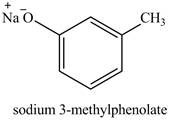
Figure 8
The product on reaction of
(f)
Interpretation:
The product on reaction of
Concept introduction:
The chemical reaction in which an electrophile group is replaced by another functional group is known as electrophilic substitution reaction. When the electrophilic substitution happens on an aromatic ring such as benzene then the reaction is known as electrophilic aromatic substitution.
Answer to Problem 18.47AP
The product on reaction of

Explanation of Solution
The reaction of

Figure 9
In this reaction, electrophilic substitution reaction occurs. Nitro will get substituted at the benzene ring. The position of the nitro group depends on the hydroxyl group as it has more ortho, para directing power than methyl group. Therefore, the products formed on reaction of

Figure 10
The product on reaction of
(g)
Interpretation:
The product on reaction of
Concept introduction:
The Friedel-Craft acylation is a type of electrophilic substitution reaction.
Answer to Problem 18.47AP
The products on reaction of

Explanation of Solution
The reaction of

Figure 11
The above reaction is an example of Friedel Crafts Acylation reaction. In the above reaction,

Figure 12
The products on reaction of
(h)
Interpretation:
The product formed on reaction of
Concept introduction:
Loss of electrons is classified as an oxidation reaction.
Answer to Problem 18.47AP
The product formed on reaction of

Explanation of Solution
The reaction of

Figure 13
The above reaction is an oxidation reaction. The phenol group that has no substitution at para group gets oxidized to

Figure 14
The product formed on reaction of
(i)
Interpretation:
The product on reaction of
Concept introduction:
Stille reaction is an example of coupling reaction. In Stille reaction, the triflate reacts with trimethylstannane in presence of
Answer to Problem 18.47AP
The product formed on reaction of
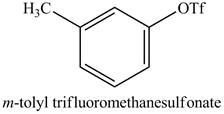
Explanation of Solution
The reaction of

Figure 15
In the above reaction, the triflic anhydride combines with the hydroxyl group of cresol to form
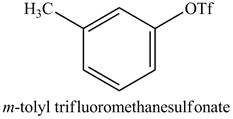
Figure 16
The product on reaction of
(j)
Interpretation:
The product on reaction of product of part (i) with
Concept introduction:
Stille reaction is an example of coupling reaction. In Stille reaction, the triflate reacts with trimethylstannane in presence of
Answer to Problem 18.47AP
The product on reaction of product of part (i) with
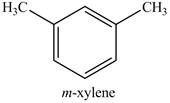
Explanation of Solution
The product of part (i) is shown below.
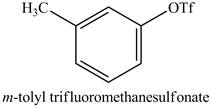
Figure 16
The reaction of product of part (i) with

Figure 17
In the above reaction,
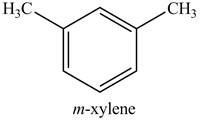
Figure 18
The product on reaction of product of part (i) with
(k)
Interpretation:
The product on reaction of product of part (i) with
Concept introduction:
The Suzuki coupling reaction is a reaction in which an aryl or vinylic boronic acid is coupled to an aryl or vinylic iodide or bromide. It is a
Answer to Problem 18.47AP
The product on reaction of product of part (i) with
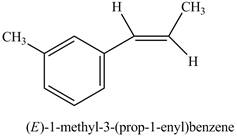
Explanation of Solution
The product of part (i) is shown below.
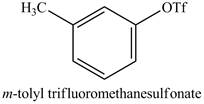
Figure 16
The reaction of product of part (i) with

Figure 19
The above reaction is Suzuki coupling reaction. In this reaction,
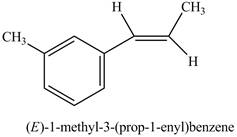
Figure 20
The product on reaction of product of part (i) with
Want to see more full solutions like this?
Chapter 18 Solutions
Organic Chemistry, Ebook And Single-course Homework Access
- Write the systematic name of each organic molecule: structure HO-C-CH2-CH3 O -OH CH3-CH2-CH2-CH2-CH2-C-OH CH3 CH3-CH-CH2-C-OH Explanation Check S namearrow_forwardtheres 2 productsarrow_forwardDraw the major product of this solvolysis reaction. Ignore any inorganic byproducts. + CH3CH2OH Drawing Q Atoms, Bonds and Rings OCH2CH3 || OEt Charges OH 00-> | Undo Reset | Br Remove Done Drag To Pan +arrow_forward
- Draw the major product of this SN1 reaction. Ignore any inorganic byproducts. CH3CO2Na CH3CO2H Drawing + Br Q Atoms, Bonds and Rings OAC Charges OH ОАс Na ဂ Br Undo Reset Remove Done Drag To Pan +arrow_forwardOrganic Functional Groups entifying positions labeled with Greek letters in acids and derivatives 1/5 ssible, replace an H atom on the a carbon of the molecule in the drawing area with a ce an H atom on the ẞ carbon with a hydroxyl group substituent. ne of the substituents can't be added for any reason, just don't add it. If neither substi er the drawing area. O H OH Oneither substituent can be added. Check D 1 Accessibility ado na witharrow_forwardDifferentiate between electrophilic and nucleophilic groups. Give examples.arrow_forward
- An aldehyde/ketone plus an alcohol gives a hemiacetal, and an excess of alcohol gives an acetal. The reaction is an equilibrium; in aldehydes, it's shifted to the right and in ketones, to the left. Explain.arrow_forwardDraw a Haworth projection or a common cyclic form of this monosaccharide: H- -OH H- OH H- -OH CH₂OHarrow_forwardAnswer the question in the first photoarrow_forward
- Ggggffg2258555426855 please don't use AI Calculate the positions at which the probability of a particle in a one-dimensional box is maximum if the particle is in the fifth energy level and in the eighth energy level.arrow_forwardExplain the concepts of hemiacetal and acetal.arrow_forwardBriefly describe a nucleophilic addition.arrow_forward
 ChemistryChemistryISBN:9781305957404Author:Steven S. Zumdahl, Susan A. Zumdahl, Donald J. DeCostePublisher:Cengage Learning
ChemistryChemistryISBN:9781305957404Author:Steven S. Zumdahl, Susan A. Zumdahl, Donald J. DeCostePublisher:Cengage Learning ChemistryChemistryISBN:9781259911156Author:Raymond Chang Dr., Jason Overby ProfessorPublisher:McGraw-Hill Education
ChemistryChemistryISBN:9781259911156Author:Raymond Chang Dr., Jason Overby ProfessorPublisher:McGraw-Hill Education Principles of Instrumental AnalysisChemistryISBN:9781305577213Author:Douglas A. Skoog, F. James Holler, Stanley R. CrouchPublisher:Cengage Learning
Principles of Instrumental AnalysisChemistryISBN:9781305577213Author:Douglas A. Skoog, F. James Holler, Stanley R. CrouchPublisher:Cengage Learning Organic ChemistryChemistryISBN:9780078021558Author:Janice Gorzynski Smith Dr.Publisher:McGraw-Hill Education
Organic ChemistryChemistryISBN:9780078021558Author:Janice Gorzynski Smith Dr.Publisher:McGraw-Hill Education Chemistry: Principles and ReactionsChemistryISBN:9781305079373Author:William L. Masterton, Cecile N. HurleyPublisher:Cengage Learning
Chemistry: Principles and ReactionsChemistryISBN:9781305079373Author:William L. Masterton, Cecile N. HurleyPublisher:Cengage Learning Elementary Principles of Chemical Processes, Bind...ChemistryISBN:9781118431221Author:Richard M. Felder, Ronald W. Rousseau, Lisa G. BullardPublisher:WILEY
Elementary Principles of Chemical Processes, Bind...ChemistryISBN:9781118431221Author:Richard M. Felder, Ronald W. Rousseau, Lisa G. BullardPublisher:WILEY





